Why Prone Positioning?
Lung Inflammation and Disease
Placing patients in a prone (face-down) position is a technique that helps improve breathing for patients with pulmonary distress and/or complications. The resulting inflammation and fluid buildup in the lungs can cause great difficulty breathing, requiring the use of a ventilator (mechanical breathing machine).

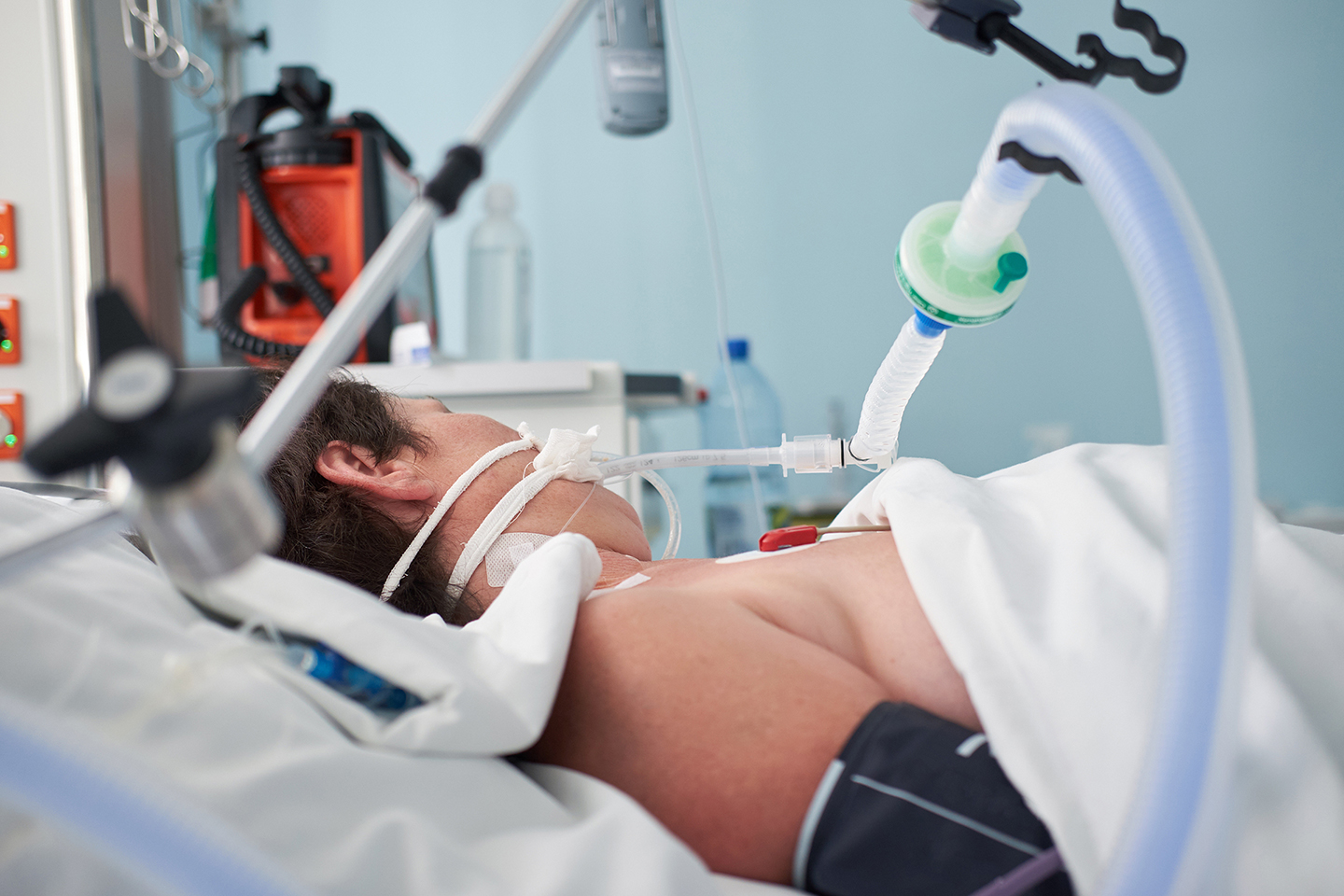
Reducing the Risk of Mechanical
Ventilator Complications
However, patients typically lie on their backs (supine) when being treated in the hospital, and this can lead to serious complications when they are on a ventilator. Research has shown that placing patients on their abdomens (prone) with careful monitoring can avoid many of these complications and result in a quicker recovery.
Detrimental Effects of the
Supine Position
In the supine position, the weight of the heart and abdominal organs press down on the lower areas of the lungs where the majority of the alveoli are located. In patients with pulmonary distress and/or complications, these alveoli are already compromised by the inflammation and extra fluid in the lungs, making it difficult for them to do their job of oxygenation, which is the exchange of carbon dioxide for oxygen. When the fluid-filled alveoli are affected by the pressure of gravity acting on nearby organs and the pressure being administered by the ventilator, they often collapse or lose function, impairing oxygenation and lung function even further.
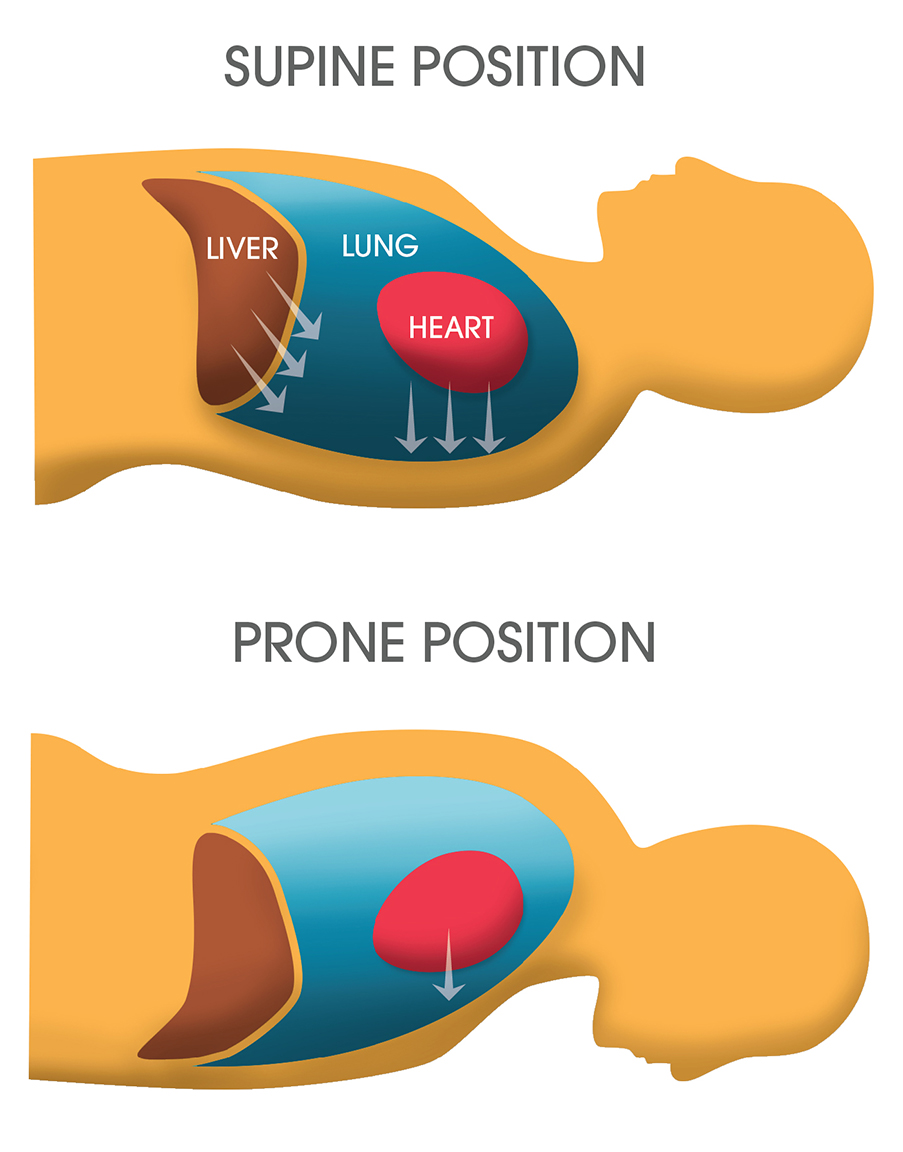
How Prone Positioning Can Help Patients

Improve Oxygenation
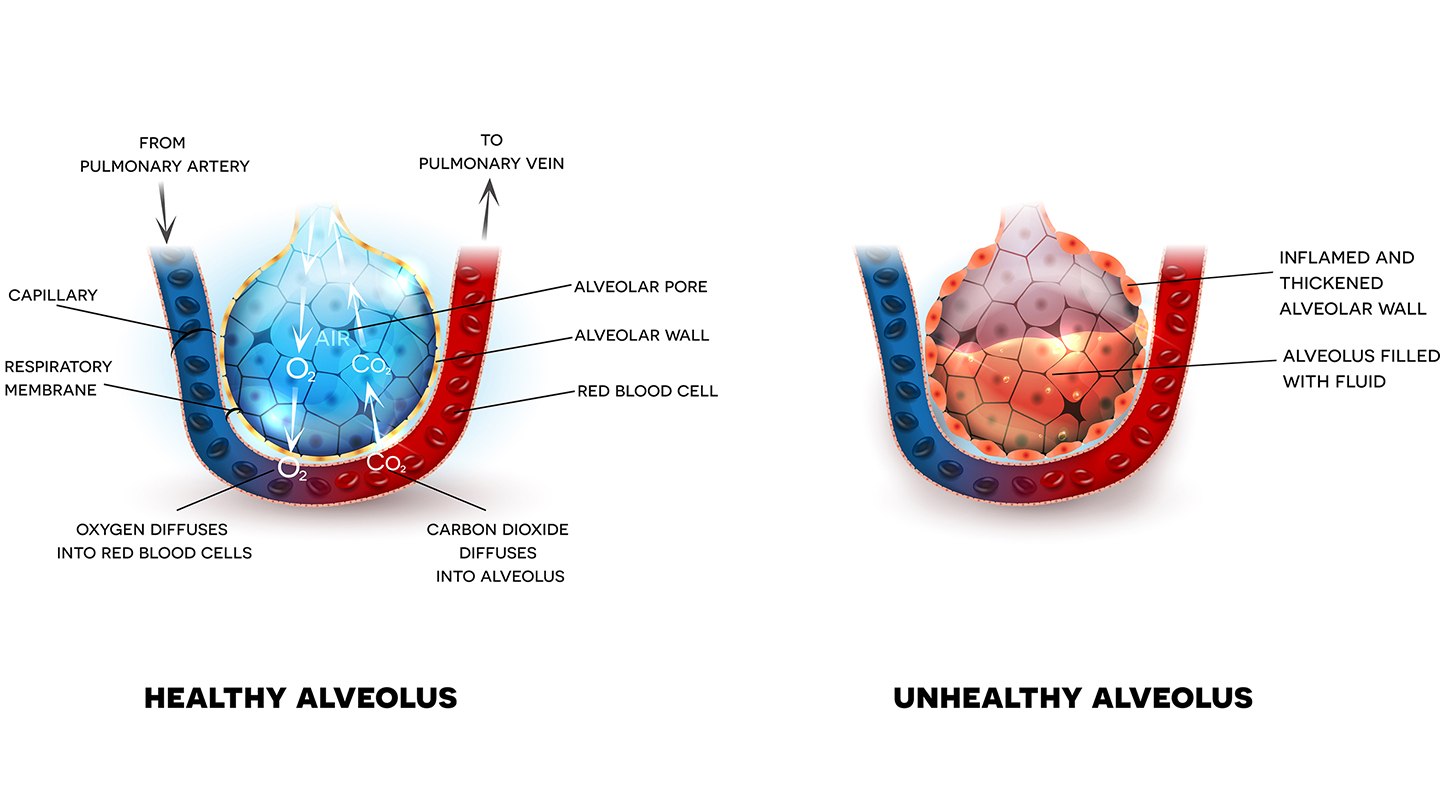
Moving a mechanically ventilated patient into the prone position relieves pressure from the heart and abdomen on the lungs and assists in the removal of the fluid in the alveoli, which allows the alveoli to resume the life-giving exchange of oxygen and carbon dioxide. This results in improved oxygenation when the balance between blood and air flow is restored. This also helps patients get off the ventilator more quickly, which protects them from possible lung injuries caused by the excess mechanical stretching of areas of the lungs.
Improve Heart Function
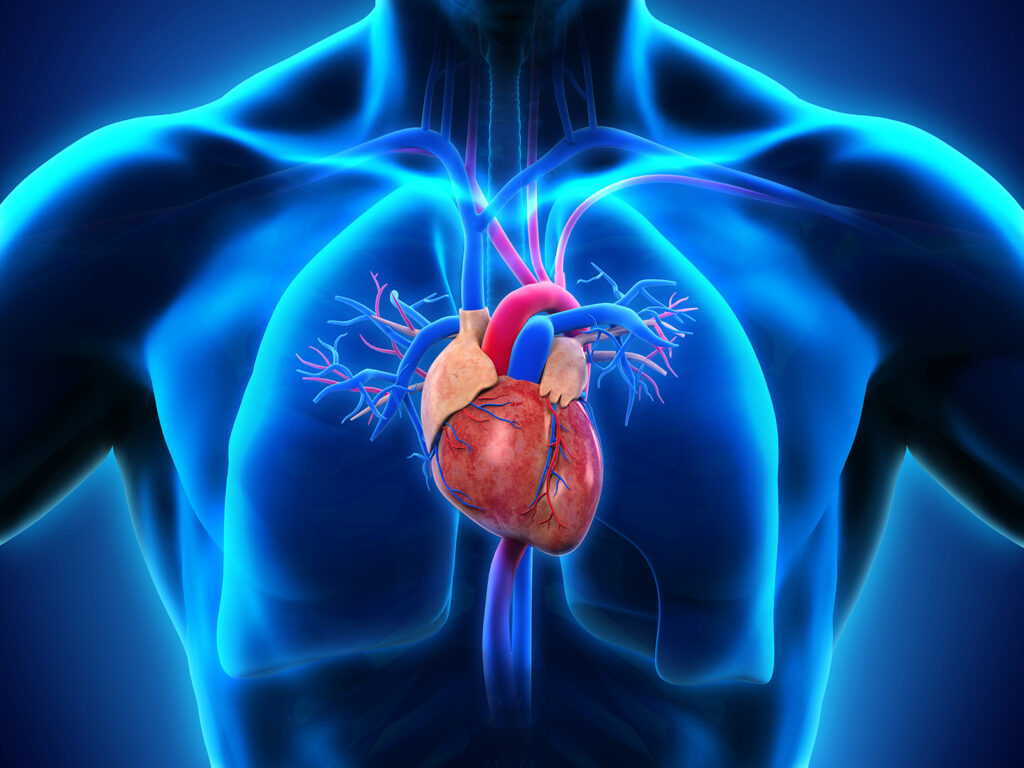
Heart function may also benefit from prone positioning, improving blood flow as the blood vessels in the lungs become less constricted. When the heart pumps more efficiently, oxygen is delivered more quickly to the whole body, which enhances the healing process.
Prevent Further Fluid Accumulation
The prone position also aids healing because fluid that has accumulated in the alveoli drains out of the lungs when the patient is face-down, instead of into the lungs.
Because the mouth and nose are facing down in the prone position, secretions produced by the disease process in the lung may drain better.
Reference: Hadaya J, Benharash P. Prone Positioning for Acute Respiratory Distress Syndrome (ARDS). JAMA. 2020;324(13):1361. doi:10.1001/jama.2020.14901. Retrieved from https://jamanetwork.com/journals/jama/fullarticle/2769872
Placing the Patient in the Prone Position

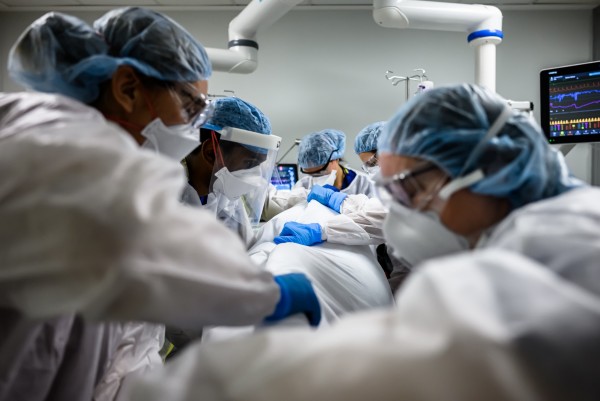
Manual positioning of patients from supine to prone involves many risks and requires the presence of several healthcare professionals for each patient. It can be difficult to reposition patients without dislodging breathing or IV tubes, and they may also develop a serious drop in blood pressure. In order to ensure patient safety while changing position manually, doctors, nurses, and respiratory therapists must be present. Often patients need to be kept in a prone position for 16 hours a day to reap the benefits, but it is important to adjust their position periodically to protect them from skin and nerve injuries that can occur from being too long in one position.
It is imperative that all prone patients be monitored closely. If manually positioned patients need CPR, the same team of healthcare clinicians needs to be mobilized immediately to switch them back to a supine position for resuscitation. All of these factors make manual prone positioning very difficult without an automated prone positioning system like the Pronova-O2.
Reference: Hadaya J, Benharash P. Prone Positioning for Acute Respiratory Distress Syndrome (ARDS). JAMA. 2020;324(13):1361. doi:10.1001/jama.2020.14901. Retrieved from https://jamanetwork.com/journals/jama/fullarticle/2769872
Automated Prone Positioning Advantages

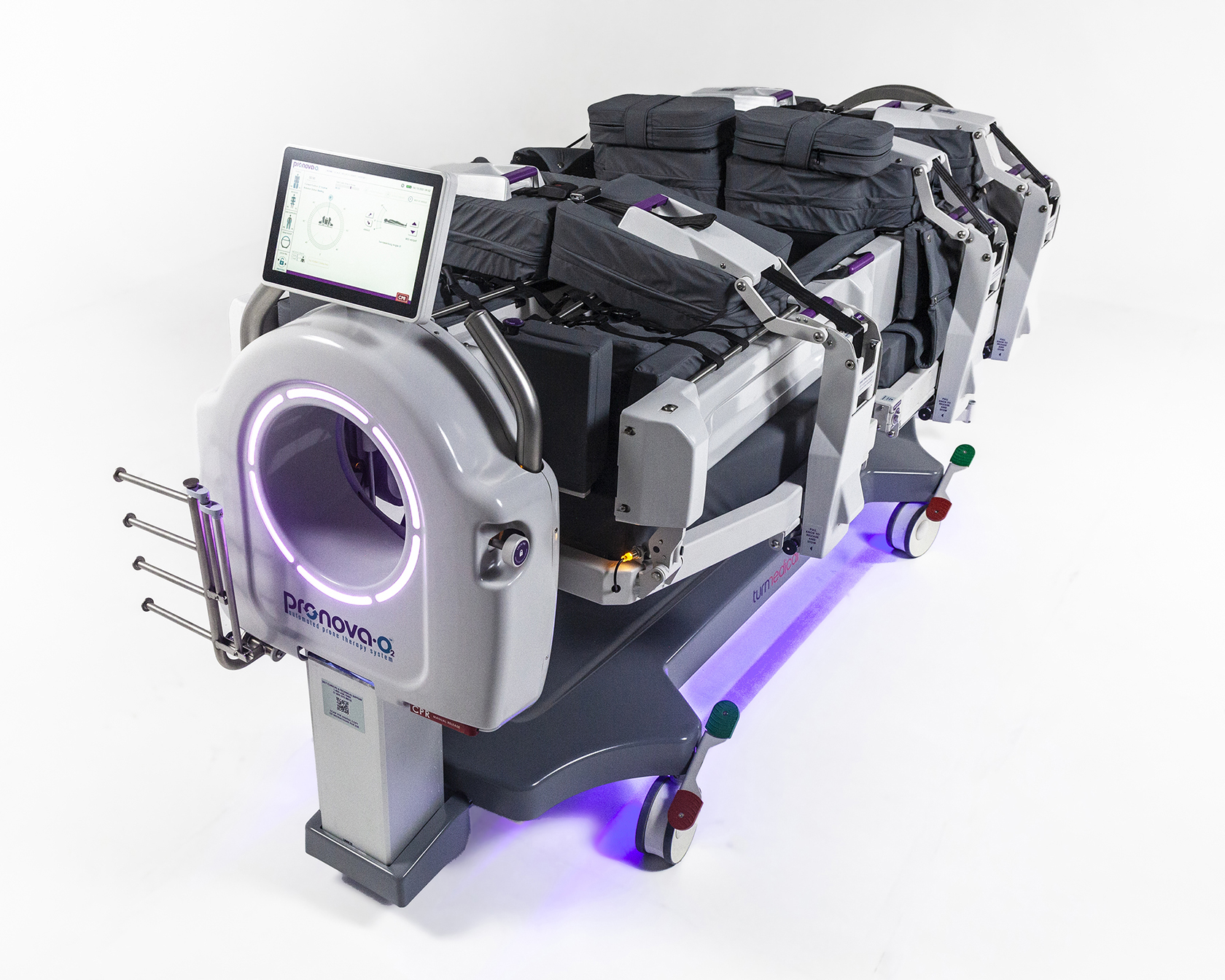
Pronova-O2 was developed with the understanding of the importance of prone positioning as well as the risks and physical requirements to complete this maneuver. Pronova-O2 simplifies the prone process by allowing the clinician to safely make a position change through the user interface once the patient is placed and secured in the surface. CPR is readily available and can be performed by one person with appropriate monitoring of the patient. Please visit About Pronova-O2 to learn more.
Want to Learn More About Automated Prone Position Therapy?
Want to Learn More About Prone Position Therapy?
Contact Info
Our Location:
1160 Arion Pkwy, Ste 102
San Antonio, Texas 78216
Call Us:
Email:
Career Opportunities
Interested in coming to work for us?
Turn Medical attracts and retains talented individuals ready to tackle challenges and be part of a collaborative culture.
